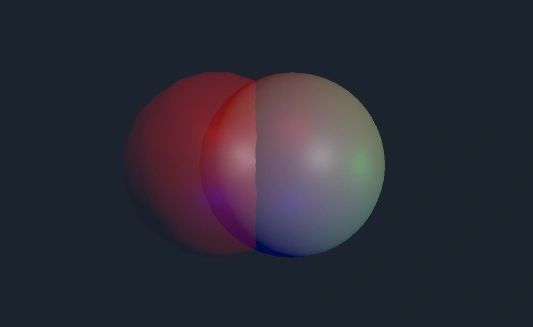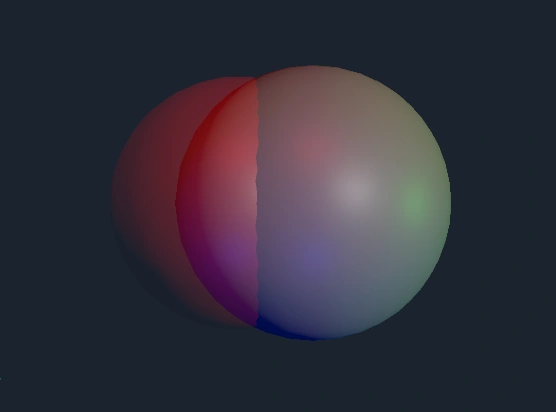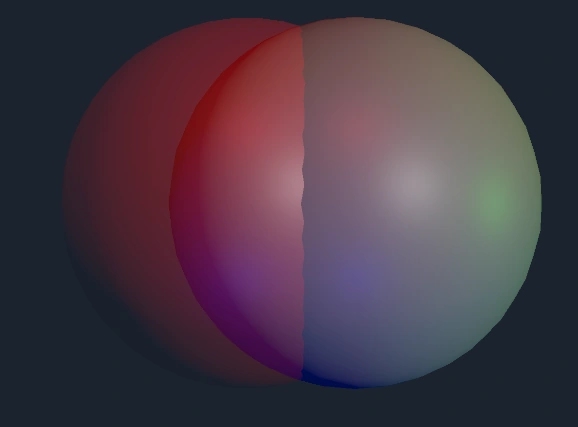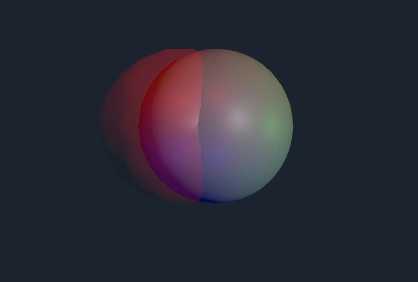I relaxed over the long weekend and let the idea for a method of properly capturing the scale of a the mesh that results from the combination of a given number of metaballs slowly cook on the backburner of my brain. The biggest issue with the data I collected last Friday was the low resolution of scale increments that resulted from deriving my scale from an analysis of the low-res marching cubes voxel grid. Gradually, I realized that analyzing the voxel grid was not the move and that my eyes did a much better job of choosing the proper scale for my sphere I compared to the combined metaballs than my algorithm did. When I could see the flat, unlit sphere on top of the metaball mesh, it meant my sphere was larger, and when I couldn’t see it, the opposite was true.
To make my algorithm work more like my eyes, I needed to get the pixel data on the screen. Therefore, I created a script to read the pixel data from a render texture that a camera fed to, and compared the color of a pixel in the center of the game view to the color of the comparison sphere’s material. If the color’s matched, then the sphere was larger. And because I only needed to read a single pixel’s color data, the script actually ran in real time!
With accurate data collected, I turned to ChatGPT for some help building a model to determine the combined size for any combination of 2-6 metaballs of various radii. Since I’ve been taking a course on this stuff, I actually understood nearly all the code!
Epoch 0/1000, Loss: 4.101675987243652
Epoch 100/1000, Loss: 0.004486877005547285
Epoch 200/1000, Loss: 0.002015921985730529
Epoch 300/1000, Loss: 0.001185260945931077
Epoch 400/1000, Loss: 0.0008319763001054525
Epoch 500/1000, Loss: 0.0006529748789034784
Epoch 600/1000, Loss: 0.0005650245002470911
Epoch 700/1000, Loss: 0.0005058838287368417
Epoch 800/1000, Loss: 0.0004656313976738602
Epoch 900/1000, Loss: 0.0004306936461944133Just look at that microscopic loss!
I began manually testing predicted output sizes in my scene.


As I began to test with larger radii, I started seeing some incorrect predictions. This is probably due to the fact that I only collected data on small radii (max 2 units). Bumping some of the radii above that maximum brought me inconsistency. Looks like I need to collect more data!
Trained the model with some larger radii and now my data is looking correct.


Now I’m sure enough that if I start noticing discrepancies between the predicted size and actual size, I just need to feed my model a better sample.
I tried using my model inside Unity with the new ML Agents package. Unfortunately, documentation is sparse enough to where ChatGPT and Claude both steered me into broken scripts. Of course, since I never bothered fixing the broken link between Unity and my code editor, I wouldn’t realize the scripts were broken until saving the changes and going back to Unity. After fussing around for over 40 minutes with no luck, I decided to finally fix the editor issue. It was as simple as going to Assets→Open C# Project. Now I have intelligent error detection again!
If there’s anything to be learned here, it’s to fix any workflow issues before coding. A messy environment leads to messy code.